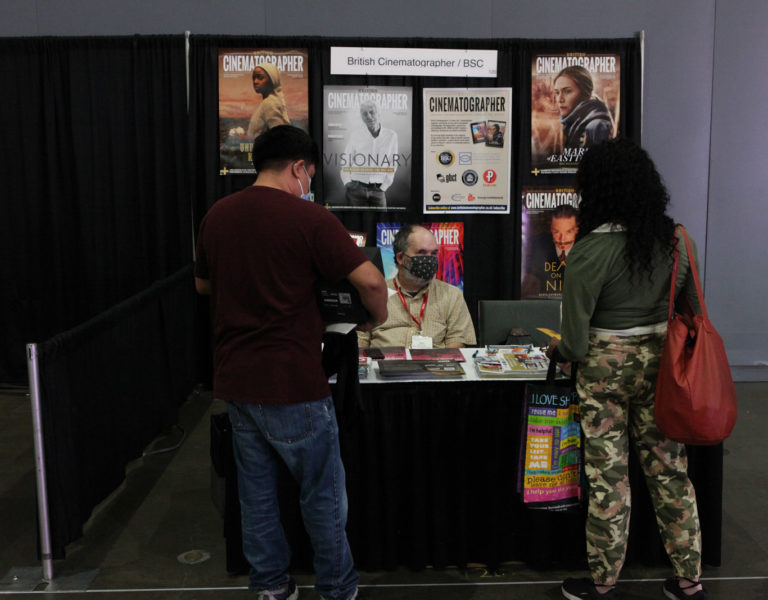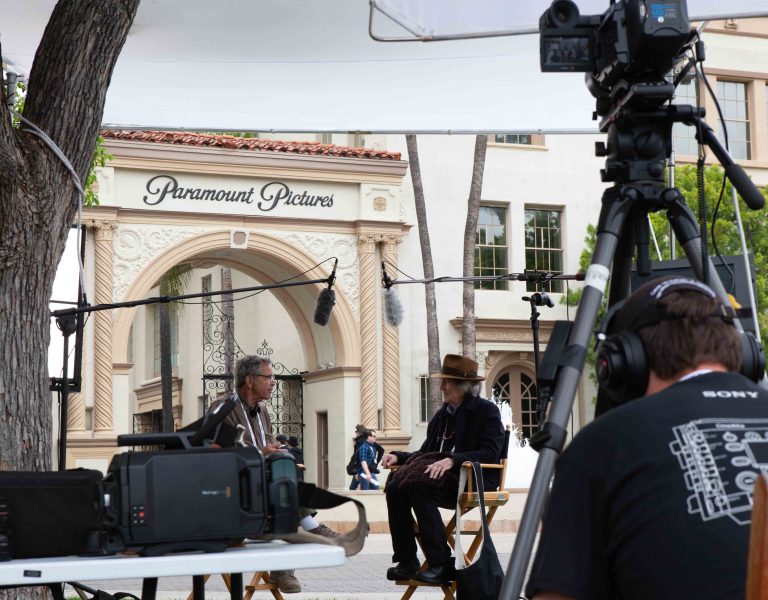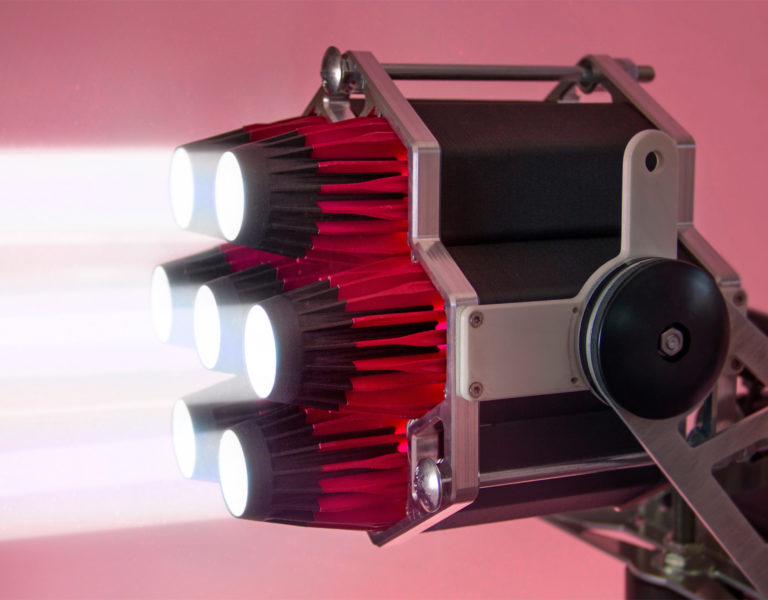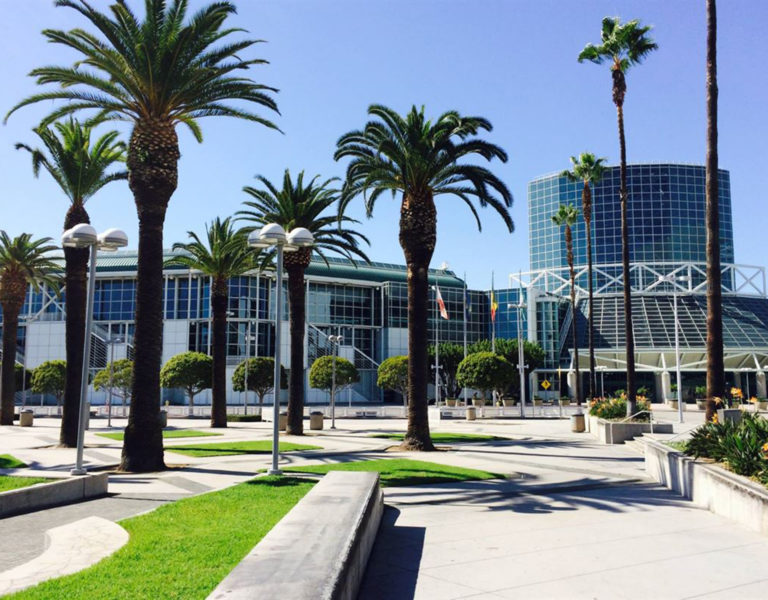INNOVATION AND ACCOLADES
For the first time since its pandemic-era displacement to downtown LA’s Convention Center, Cine Gear returned to its traditional Paramount’s backlot setting. Doubtless, when planning that return, it was hoped this year’s edition would not be holding forth in such “interesting times” as its predecessors.
While the two days of exhibits found the studio’s old New York street sets once again lined with vendors, and milling throngs to take it all in during a well-timed stretch of sunny weather, it turned out that with the ongoing writers’ strike, many conversations weren’t only about the new and available gear, but when crew might get back to work to use it.
Of course, the show itself wasn’t being struck, as exhibitors were advised in an email a few days ahead of the event. There was also considerable speculation that the thicker-than-expected crowds on Friday were a result of the strike, with little left in the way of production work to keep people otherwise busy.
One ASC member told us it was likely a summer to settle in for some beach reading, rather than getting overly worked up about dynamics that were out of the hands of anyone there at the show – though that was before anyone knew the DGA was settling with the producers over that same weekend. How that will ultimately affect strike dynamics remains unknown as of this writing.
But the speculation played out among mostly cheerful moods. Eben Bolter BSC swung by as we were setting up, tapping a stack of magazines with a cover story on his work on The Last of Us, saying “that’s me!” Indeed, there was a lot of tapping, and taking, of both our issues and supplements, as – in another indication of the expanded foot traffic – the BC booth was wiped out of stock halfway through the second day.
Bolter also invited us to the Aputure booth, where the lighting company hosted Q&As with him on the subject of virtual production. He said there was “no conventionally objective way to do cinematography,” and that he had been a “DSLR Nerd,” starting out, though adding that while no part of The Last of Us was done virtually – LED volumes weren’t available for the show’s Calgary locales – there were advantages like potentially turning six days of location work into “two days of shooting.” However, one “major disadvantage is (still) blocking,” since – so far – you can’t really have actors move around too much inside virtual worlds. But the DP also said the technology “allows me to use dirt and muck around” in planning shots, exploring virtual locations in both a “fun” and freeing way.
Bolter’s in-booth presentation was part of a robust program of panels, demos, and awards, all of which could warrant a separate article. Even the accolades side of the event was expanded:
On Friday evening, Cine Gear co-founder Juliane Grosso presented a Legacy Lifetime Achievement Award to beloved gear house founder Otto Nemenz, one to Michael Goi ASC for Visionary Achievement in Cinematography, and the new Karl Kresser Heart of the Community Award, named for the show’s other founder, and Grosso’s late husband, which went to John W. Simmons ASC – a recent ASC board member, as well a teacher and mentor to many following in his own footsteps. Grosso herself was, in turn, presented the Icon Award by Women in Media (WiM), which celebrates women in the cinematographic arts who have long supported the community around them.
Other icons gathered at the show’s annual ASC panel – nine DPs, led by moderator David Perkal ASC. The group was in the smaller Sherry Lansing Theatre on the lot, which filled to overflowing quickly. Many audience questions, from self-identified “future ASC members” were about best practices on set, passion projects vs. commercial work, and what, if anything, cinematographers can do about bridging a clearly pronounced “empathy gap” in the world.
Emmy-nominee Ava Berkofsky ASC offered that one way was “staying curious about the world,” and mentioned her own curiosity might take her back to an unscripted doc project during these strike times. “I haven’t shot a documentary in ten years.”
Former ASC President Stephen Lighthill, who came out of a news and documentary background, said there was a “fluidity between documentaries and features. What you get from docs is a sense of what’s real, and what a character would do.” After all, he continued, “producers and directors are looking for their cinematographers to be interesting people,” engaged in the world, widely read, watchers and viewers of visual arts, and general “seers,” to which Perkal added “cinematographers are empaths.”
Around the bend from the Lansing were the New York streets where the bulk of the vendors were, some visible not only in their booths, but also on the programming track, such as ARRI’s presentation on the cinematic craft behind Netflix hit Wednesday, with DP David Lanzenberg and gaffer Florin Mihalache. Lanzenberg noting that “half the job is getting the job,” and once he did, he kept working with director Tim Burton, “more of a spherical guy,” to establish the show’s look. Burton was also “not a long lens kind of guy – more about the tableau itself,” and said to Lanzenberg “I don’t want anything too gimmicky.”
After “tests at ARRI in Burbank,” they arrived at a Mini LF with Signature Primes, which, Lanzenberg said, also gave them increased reassurance with the show’s Romania-based shoot, given the company’s global support network.
At the Canon booth, Paul Hawxhurst, a senior technical specialist hailing from NY, said they were continuing their “year of the lenses” theme from NAB, with their new Flex Zoom Cinema Lens series, allowing one to switch between PL or EF mounts, without shims.
Elsewhere, Cooke’s director of product experiences, Carey Duffy, said “the show’s been fantastic,” with a lot of enthusiasm regarding their partnership with EZtrack for expanded camera data flow building on Cooke’s i/ technology, mixing camera tracking and other data, allowing filmmakers to see VFX, set extensions, etc., in real time.
Duffy says they’re looking for anamorphic projects to further showcase the technology, which bring “visual effects into the camera, live,” and – like LED volumes – shows how far we’ve come, since Paramount’s silent-era “Famous Players” founding. “90% of (their) lenses were Cooke.”
Which brings up whether each return to the lot represents a kind of “full circle” for the venerable glass maker.
Meanwhile, Cine Gear will be back in a year, with yet another interesting show – whose surface we’ve only scratched here – though hopefully, finally, in somewhat less “interesting times.”










